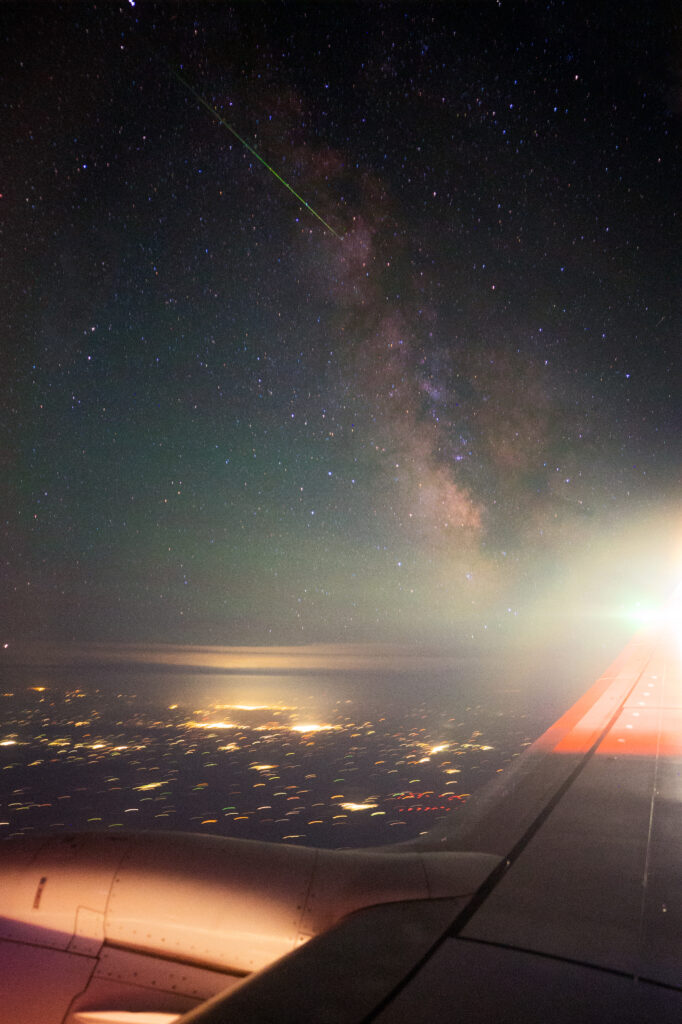Each year, astrophotographers and stargazers alike wait patiently for the skies to do their thing. Whether it’s an eclipse, an especially visible planet, a meteor shower, or just a really clear night, capturing great photos of the heavens above is as much about being at the right place at the right time as it is about gear and technique.
So if you love photographing the night sky and want to be ready for those unique opportunities, now is the time to start planning. This handy guide can help you plan your 2024 astrophotography calendar, so you’ll be prepared to take your most amazing astro photos ever! I’ve also included some lens suggestions that will help take the guesswork out of bringing the right gear.
Venus and Mars Conjunction: February 18-22, 2024
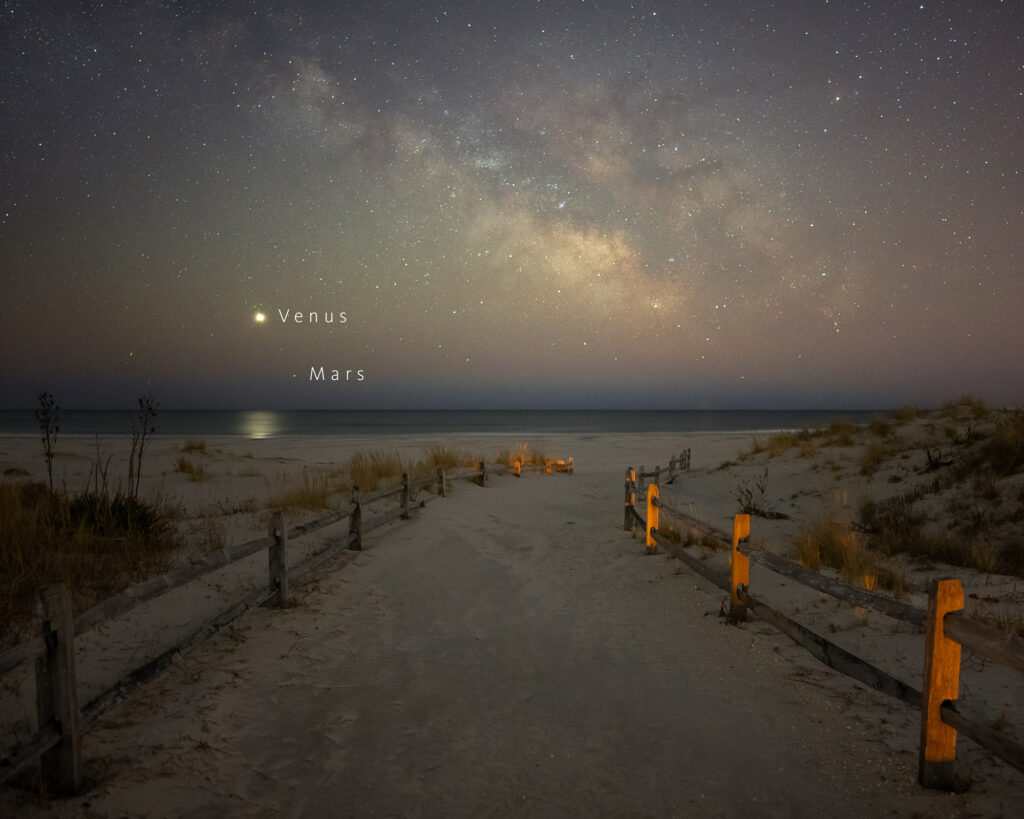
Moon Phase: Waxing Crescent
Suggested Lens: SIGMA 35mm F1.4 DG DN | Art or wider prime lens.
Visibility: Early morning, starting around 5:00AM EST
Technical Tip: There will still be some residual light from sunset when you start shooting. Be sure to adjust your exposure time and aperture as it gets later in the evening.
Composition Tip: If you’re using a wider focal length, include recognizable foreground objects to add depth and context. The brightness of Venus and Mars will allow this photo to be taken from areas with more light pollution than most astro photos, which will allow for unique locations. Look for a clear view of the horizon for opportunities as the planets are closely aligned for a few days with the closet approach occurring on the 22nd.
Lunar Eclipse: March 25, 2024
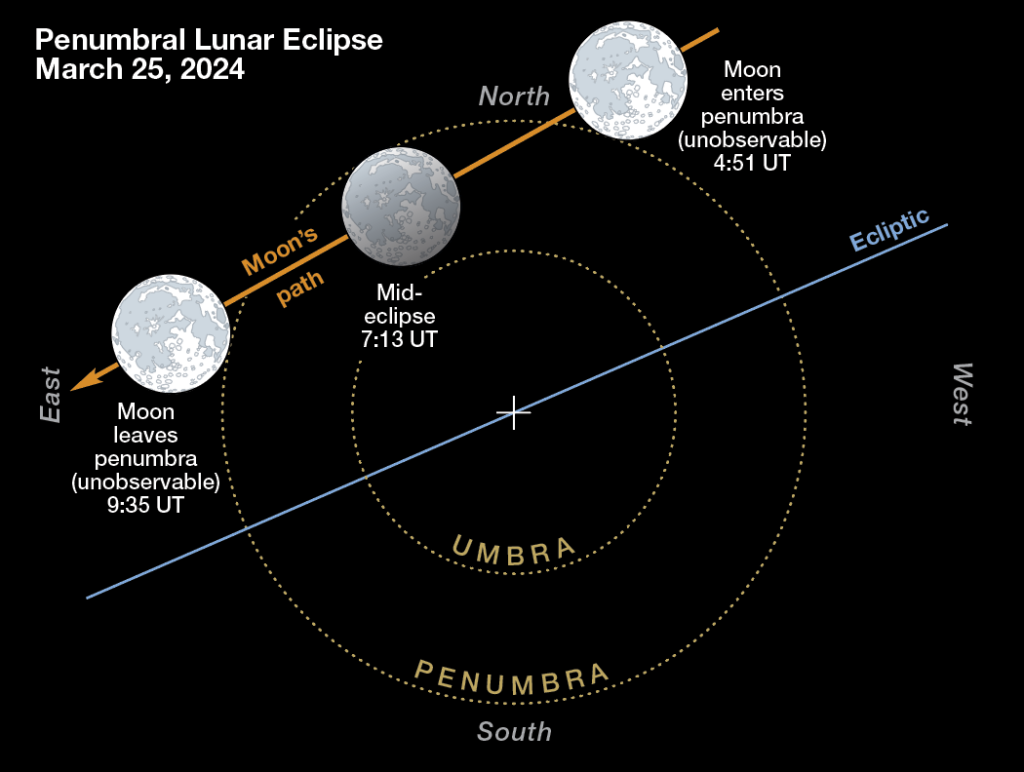
Moon Phase: Waxing Crescent
Suggested Lens: SIGMA 150-600mm F5-6.3 DG DN OS | Sports or similar telephoto lens (400mm or greater).
Visibility: Late night, starting around 12:53AM EDT.
Technical Tip: Use a tripod and start with a low ISO. Your settings will change through the different phases, so be sure to keep an eye on your histogram to maintain proper exposure and image detail.
Composition Tip: Take a series through the duration of the eclipse to create a mosaic.
Total Solar Eclipse: April 8, 2024
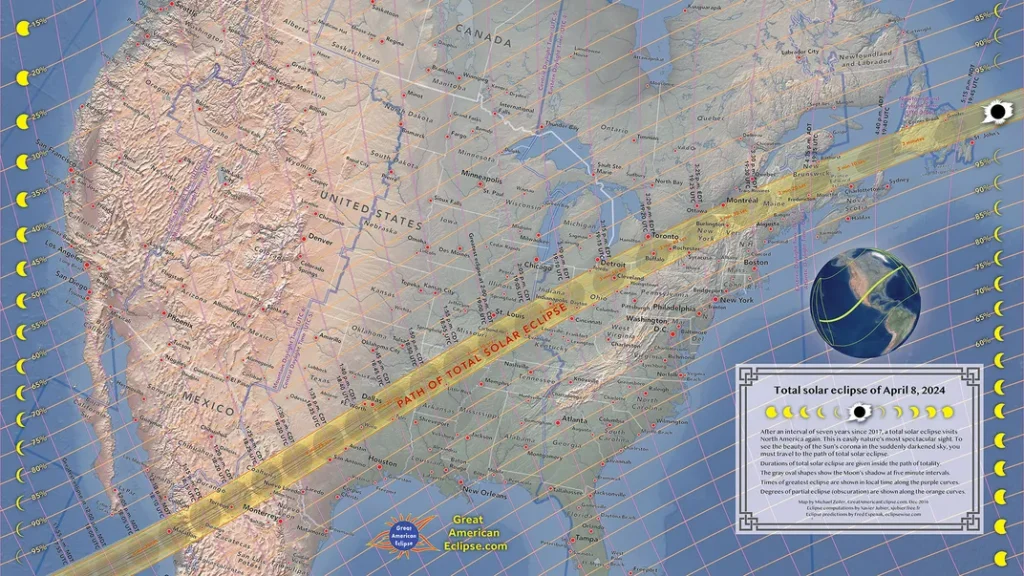
Suggested Lenses: SIGMA 20mm F1.4 DG DN | Art or SIGMA 24mm F1.4 DG DN | Art
Visibility: Late morning to early afternoon, starting around 3:00PM EDT. Totality will differ depending on your location, but you can see its path here.
Technical Tip: Use a solar filter and eclipse glasses to protect your eyes and camera sensor. DO NOT rely on standard ND filters.
Composition Tip: The vast majority of photos taken will isolate the sun. Try including a landscape or people watching the eclipse for a sense of scale and place. This will also help make your photo unique among the many photos taken.
Eta Aquarid Meteor Shower: April 15 – May 27 (Peak)
Moon Phase: Peak occurs near New Moon on May 6th
Suggested Lens: SIGMA 14mm F1.4 DG DN | Art or similar wide-angle lens.
Visibility: Best in the pre-dawn hours.
Technical Tip: Take advantage of the edge-to-edge sharpness at F1.4 of the 14mm and capture as much light as possible. Use a remote to take consecutive photos to increase your chances of capturing a meteor.
Composition Tip: Include the horizon, or a unique or identifiable object in your foreground, instead of capturing only the sky.
Lyrid Meteor Shower: April 22, 2024
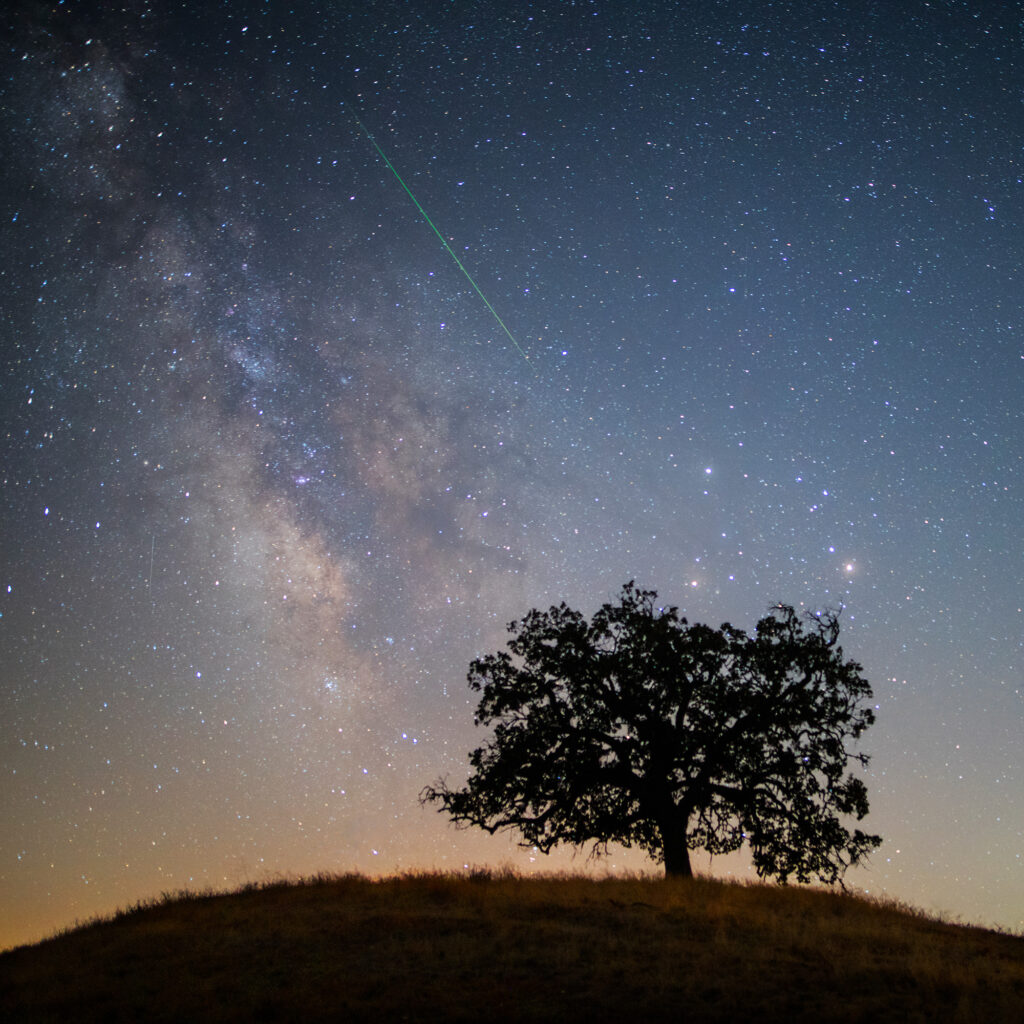
Moon Phase: Full Moon
Suggested Lens: SIGMA 24-70mm F2.8 DG DN | Art
Visibility: Late night to early morning, after midnight, around 2:00AM EDT.
Technical Tip: Use shorter exposures to help compensate for the bright Moon.
Composition Tip: Take advantage of the extra light from the Moon and put a strong emphasis on your landscape. While some meteors will be washed out or more difficult to see, a bright meteor over a well-lit landscape can make for a stunning image.
Saturn Opposition: July 9, 2024
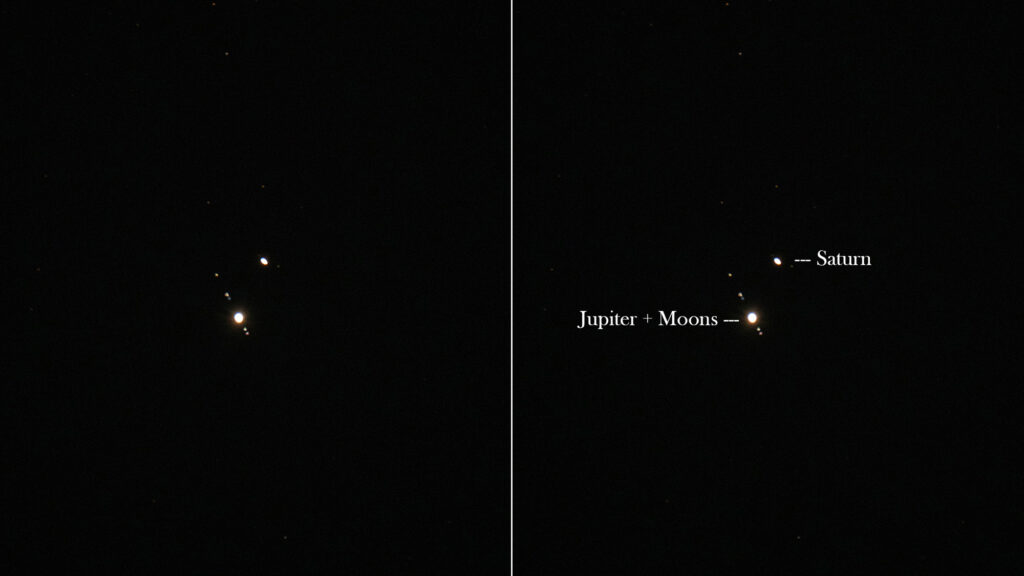
Moon Phase: Waxing Crescent
Suggested Lens: SIGMA 150-600mm F5-6.3 DG DN OS | Sports or similar telephoto lens.
Visibility: Late evening to late night, starting around 8:30PM EDT.
Technical Tip: Use manual focus and a remote shutter release for sharp Saturn images.
Composition Tip: Even at longer focal lengths, your composition will likely consist of Saturn, relatively small in your frame, surrounded by sky. Take multiple exposures and try to keep Saturn centered to leave with photos you can stack to enhance sharpness.
Perseid Meteor Shower: August 12-13, 2024
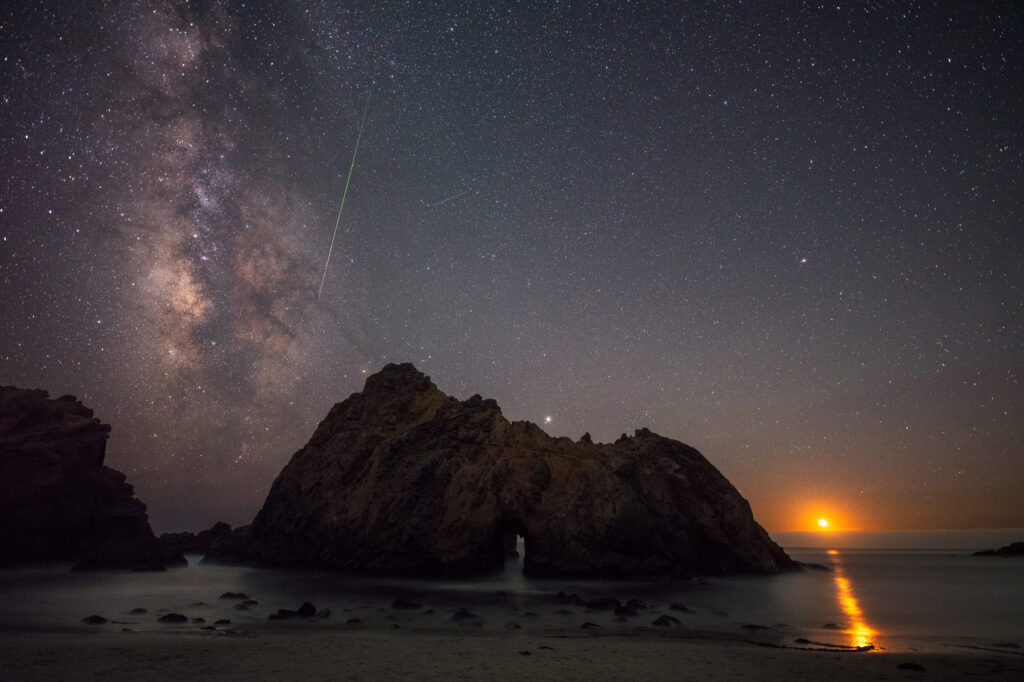
Moon Phase: Last Quarter
Suggested Lens: SIGMA 14-24mm F2.8 DG DN | Art or similar wide-angle lens
Visibility: Late night to early morning, after midnight, around 1:00AM EDT.
Technical Tip: Use an app like Photo Pills to help find the longest shutter speed you can use to keep your stars sharp. Even if taking multiple long exposures, you’ll want any photo that captures a meteor to be able to look great on its own.
Composition Tip: Include the radiant of the meteor shower, Perseus, in your composition.
Supermoon: November 15, 2024
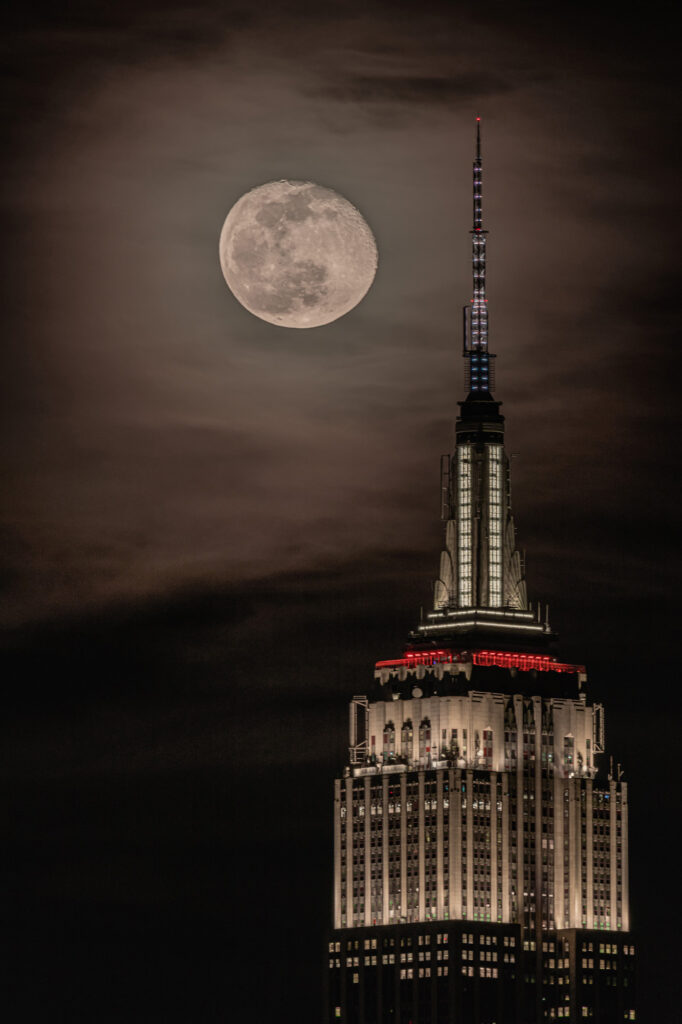
Moon Phase: Full Moon
Suggested Lens: SIGMA 150-600mm F5-6.3 DG DN OS | Sports or similar telephoto lens.
Visibility: Evening, starting around 6:00PM EST
Technical Tip: Use a remote shutter release to minimize camera shake during long telephoto shots.
Composition Tip: Look for open areas with interesting objects near the horizon. Distant trees or city skylines make for great choices during the Moonrise.
Jupiter at Opposition: December 7, 2024
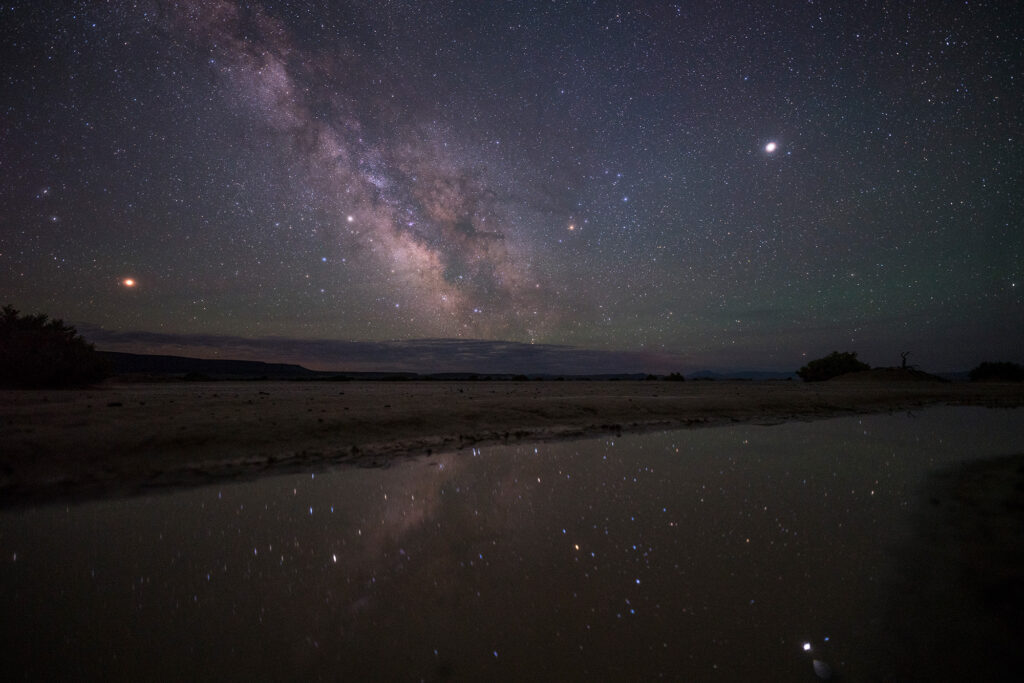
Moon Phase: Waxing Crescent
Suggested Lens: SIGMA 20mm F1.4 DG DN | Art or SIGMA 70-200mm F2.8 DG DN | Sports
Visibility: Entire night
Technical Tip: Keep an eye on your shutter speed as the position of the Moon changes throughout the night. While higher in the sky, you may find slightly shorter exposure times work better.
Composition Tip: At longer focal lengths, the Moons of Jupiter will also be visible. Plan an interesting composition while Jupiter is close to the horizon. Keep Jupiter near away from the edges of your frame to avoid distracting placement.
Geminid Meteor Shower: December 13-14, 2024
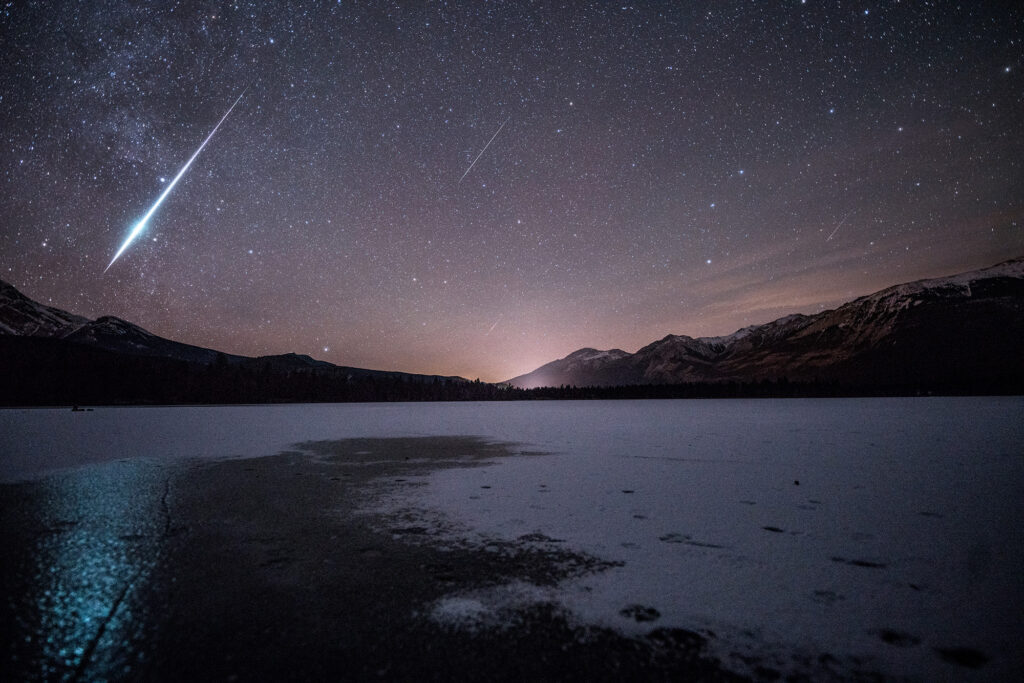
Moon Phase: New Moon
Suggested Lens: SIGMA 14mm F1.4 DG DN | Art
Visibility: Late night to early morning, around 1:00AM EST
Technical Tip: In the chilly temperatures of mid-December, consider using a lens heater to keep any condensation clear of the front element of your lens and potentially ruining your image. The SIGMA 14mm, 20mm & 24mm F1.4 DG DN | Art lenses all have a built-in-retainer to prevent the lens heater from drifting too far forward and causing any unwanted vignetting.
Composition Tip: The Geminids are one of the best meteor showers of the year and are often visible throughout the entire sky. This will allow more flexibility in the direction your composition is facing.


